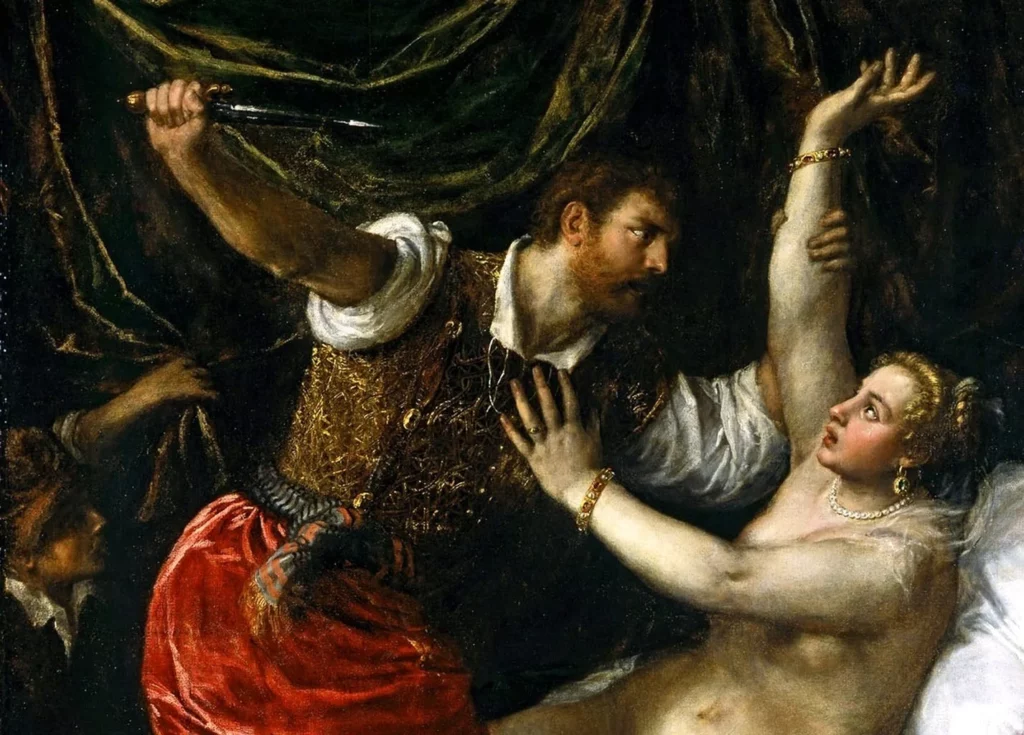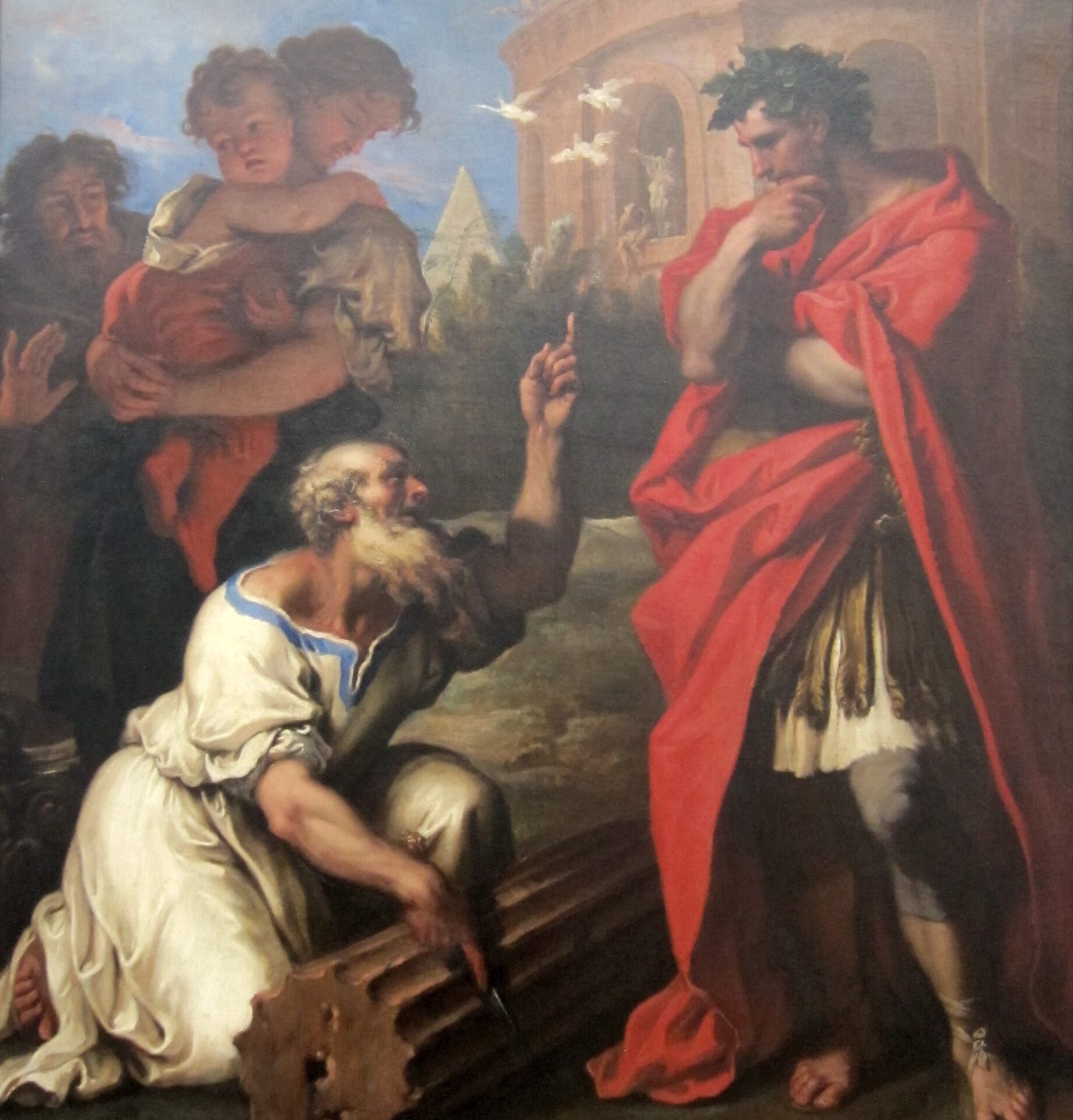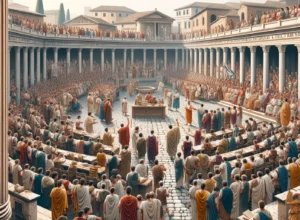The period of the kings of Rome is a fascinating chapter in ancient history that blends myth and reality, laying the foundation for one of the greatest civilizations in the Western world. Spanning from the legendary founding of Rome by Romulus in 753 BC to the establishment of the Roman Republic in 509 BC, this era shaped the early political, social, and cultural landscape of Rome. We will delve deep into the myths surrounding the founding of Rome, explore the historical realities of the kingship, and analyze the legacy of this foundational period.
Myth and Legend: The Founding of Rome
The story of Rome’s founding is steeped in myth and legend, making it a captivating tale that has captured the imagination of countless generations. According to tradition, Rome was founded on April 21, 753 BC, by Romulus, born to the Vestal Virgin Rhea Silvia and the god Mars.
Romulus and his twin brother Remus were abandoned at birth and left to die, but they were miraculously saved by a she-wolf who nursed and raised them in the wild. As they grew older, Romulus and Remus decided to build a city near the Tiber River. However, a disagreement arose between them over the site, leading to Romulus killing Remus and becoming the first king and founder of Rome.
The Seven Kings of Rome
Following Romulus, six more kings are traditionally recognized as having ruled Rome during this monarchical period. These kings are often viewed through a mix of historical accounts, archaeological evidence, and mythological narratives. Let’s briefly explore each of their reigns.
Romulus (753–716 BC)
Romulus’s reign was characterized by the establishment of key institutions that would shape Rome’s political and social structure for centuries. He is credited with creating the Senate, a council of elders responsible for advising the king and deliberating on important matters of state. The division of the Roman population into thirty curiae or wards, based on kinship and locality, also dates back to Romulus’s time and laid the groundwork for future political organization.
Additionally, Romulus instituted the assembly of citizens known as the Comitia Curiata, where important decisions regarding war, peace, and laws were made. These early institutions reflected Romulus’s efforts to consolidate power, maintain social order, and foster a sense of collective identity among the diverse inhabitants of Rome.
Romulus was not only a statesman but also a warrior king who expanded Rome’s territory through military conquests. According to legend, he waged successful campaigns against neighboring tribes such as the Sabines and the Etruscans, securing resources, land, and captives for the growing city.
One of the most famous episodes of Romulus’s military prowess is the abduction of the Sabine women. Seeking to populate Rome with women from neighboring tribes, Romulus invited the Sabines to a festival but then seized their women, sparking a conflict that eventually led to the integration of the Sabines into Roman society through diplomacy and marriage.

The end of Romulus’s reign is shrouded in mystery and myth. According to legend, he was either deified as the god Quirinus or mysteriously disappeared during a storm, signaling his divine ascent to the heavens. Regardless of the exact circumstances, Romulus left a lasting legacy as Rome’s legendary founder-king.
Numa Pompilius (715–673 BC)
After the death or disappearance of Romulus, a period of interregnum ensued, during which Rome was without a king. The Roman Senate then elected Numa Pompilius, a Sabine from Cures, as the second king of Rome. Numa’s peaceful and pious nature stood in stark contrast to the martial prowess of Romulus, marking a shift towards a more religiously and morally centered rule.
Numa Pompilius is renowned for his deep piety and dedication to religious practices. He is credited with establishing many of Rome’s religious institutions and rituals, seeking to appease the gods and bring divine favor to the city. Numa’s religious reforms included the creation of the office of pontifex maximus, or high priest, responsible for overseeing religious ceremonies, interpreting omens, and maintaining religious calendars.

Under Numa’s guidance, the Roman calendar was reformed to align with lunar cycles, and he introduced numerous festivals and rites aimed at honoring the gods and fostering civic unity. The importance of religious piety and observance became ingrained in Roman society, influencing both public and private life.
One of Numa’s notable legal achievements was the codification of Roman law into a written set of customary rules. These laws governed issues such as property rights, contracts, and family relations, providing a framework for resolving disputes and upholding societal order and laying the foundation for Rome’s legal system.
According to tradition, Numa died of natural causes in 673 BC, having ruled Rome peacefully for forty-three years.
Tullus Hostilius (673–642 BC)
Tullus Hostilius hailed from the Hostilia gens, a prominent Roman family known for its military tradition. His accession to the throne followed the peaceful and religiously focused reign of Numa Pompilius, signaling a shift towards a more aggressive and expansionist policy under his leadership.
Tullus Hostilius’s reign was defined by military campaigns aimed at extending Rome’s territorial reach and asserting dominance over neighboring tribes and cities. He waged successful wars against ancient foes such as Alba Longa, Fidenae, and Veii, showcasing Rome’s growing military might and strategic acumen. One of the most significant military achievements attributed to Tullus Hostilius is the destruction of Alba Longa, a powerful rival city that had long competed with Rome for regional supremacy. By decisively defeating Alba Longa and incorporating its population and resources into Rome, Tullus Hostilius expanded Rome’s population and strengthened its position as a regional power.
In addition to his military exploits, Tullus Hostilius oversaw various urban development projects aimed at fortifying Rome’s defenses and improving its infrastructure. He constructed defensive walls around Rome, enhancing the city’s security and resilience against external threats. Tullus also focused on expanding Rome’s population through policies that encouraged immigration and settlement.
Despite his military successes, Tullus Hostilius faced internal challenges, including tensions within the Roman populace and occasional revolts among subject cities. His aggressive approach to governance and reliance on military might also contrasted with the more diplomatic and religiously oriented policies of his predecessor Numa Pompilius. Nevertheless, Tullus Hostilius’s legacy as a warrior king and expansionist ruler contributed significantly to Rome’s early growth and territorial acquisitions. His military strategies and conquests laid the foundation for Rome’s future military campaigns and imperial ambitions, shaping the city-state into a formidable power in central Italy.
During his reign, Tullus had neglected the religious obligations and rituals essential to maintaining favor with the gods, favoring instead a militaristic and expansionist agenda. Legend has it that the god Jupiter, displeased with Tullus’s impiety and arrogance, struck his palace with lightning, resulting in a catastrophic fire that consumed Tullus and his residence in 642 BC.
Ancus Marcius (642–617 BC)
Ancus Marcius, believed to be the grandson of Numa Pompilius, ascended to the throne of Rome following the reign of Tullus Hostilius. His background as a descendant of Rome’s second king and his reputation for wisdom and fairness likely contributed to his selection as king by the Roman people and Senate.
Ancus Marcius is best known for his efforts in urban development and infrastructure projects that transformed Rome into a more fortified and organized city. During his reign, he oversaw the construction of the first bridge across the Tiber River, known as the Pons Sublicius, which facilitated trade, communication, and military movements. The establishment of the first major port at Ostia, situated at the mouth of the Tiber, further enhanced Rome’s maritime capabilities and economic prospects. Additionally, Ancus Marcius initiated the construction of the Mamertine Prison (Tullianum), a significant early Roman prison located near the Roman Forum. This structure symbolized his commitment to maintaining law and order within the growing city, setting a precedent for justice administration in Roman society.

While Ancus Marcius prioritized peaceful expansion and diplomacy, he was not hesitant to defend Rome’s interests and borders through military means when necessary. He conducted campaigns against neighboring Latin and Sabine tribes, expanding Rome’s territory and consolidating control over strategic regions.
Beyond his contributions to infrastructure and defense, Ancus Marcius is remembered for promoting justice, fairness, and adherence to laws within Roman society. His emphasis on upholding legal norms and ensuring the equitable treatment of citizens helped foster a sense of civic responsibility and accountability among the Roman populace.
It is generally believed that Ancus Marcius died of natural causes in 617 BC after ruling Rome for twenty-four years.
Lucius Tarquinius Priscus (616–579 BC)
Lucius Tarquinius Priscus, also known as Tarquin the Elder, hailed from the Etruscan city of Tarquinii (modern-day Tarquinia) and migrated to Rome, where he rose to prominence through his skills, connections, and leadership abilities. He quickly gained favor with the fourth king of Rome Ancus Marcius, who later adopted him as son. Tarquinius Priscus was the first of the Etruscan kings of Rome.
One of Tarquinius Priscus’s most notable achievements was his ambitious construction projects aimed at enhancing Rome’s infrastructure, prestige, and functionality. He initiated the construction of the Circus Maximus, an iconic chariot racing stadium and entertainment venue that became a focal point of Roman public life for centuries to come. The Circus Maximus symbolized Tarquin’s vision for grandeur and urban planning, showcasing Rome’s growing prosperity and cultural vibrancy. Additionally, Tarquinius Priscus embarked on the construction of the Cloaca Maxima, a sophisticated sewer system that drained marshy areas around the Roman Forum and improved sanitation within the city.

Tarquinius Priscus’s reign was not limited to architectural achievements. He also implemented political reforms aimed at centralizing royal authority and strengthening the monarchy’s control over Roman affairs. He expanded the Senate, admitting new members from influential families and consolidating aristocratic support for royal initiatives. These reforms underscored Tarquin’s efforts to assert royal prerogatives and project a strong, centralized monarchy capable of addressing Rome’s growing needs and challenges.
As an Etruscan ruler, Tarquinius Priscus brought elements of Etruscan culture, art, and religious practices to Rome, enriching the city’s cultural landscape and fostering cross-cultural exchanges. Etruscan architectural styles, artistic motifs, and religious rituals became intertwined with Roman traditions, creating a unique blend of cultural influences that characterized Rome’s early cosmopolitanism.
According to tradition, Lucius Tarquinius Priscus was assassinated in 579 BC by agents of the sons of Ancus Marcius, the fourth king of Rome, seeking to reclaim the throne they believed was rightfully theirs.
Servius Tullius (578–535 BC)
Servius Tullius’s origins are shrouded in legend, with various accounts suggesting different narratives about his parentage and rise to power. According to tradition, he was the son of a slave woman who gained the favor of the gods through miraculous omens and later married king Tarquinius Priscus’s daughter, thereby ascending to the throne after Tarquin’s assassination. Servius Tullius was the second king of Rome’s Etruscan dynasty.
Servius Tullius’s reign is primarily remembered for his comprehensive reforms aimed at restructuring Roman society and governance. One of his most significant contributions was the creation of the Servian Constitution, a socio-political framework that organized Roman citizens into classes based on wealth and military service obligations. The Servian Constitution divided Roman citizens into five classes and included additional divisions for the equites (equestrian class) and proletarii (property-less citizens). This classification not only determined military responsibilities and taxation but also influenced political representation and decision-making within the Roman state.
While known for his domestic reforms, Servius Tullius also demonstrated strategic acumen and military prowess during his reign. He implemented reforms within the Roman army, organizing soldiers into centuries based on wealth and equipping them according to their capabilities. This reorganization improved military effectiveness and cohesion, enabling Rome to defend its borders and expand its territory through successful campaigns against neighboring tribes and cities.
In addition to his political and military initiatives, Servius Tullius oversaw various infrastructure projects, such as the construction of the Temple of Diana on the Aventine Hill, a religious and cultural landmark that symbolized Rome’s religious devotion and architectural achievements during his reign.
Servius Tullius met a tragic end in 535 BC at the hands of his own daughter Tullia and her husband Lucius Tarquinius Superbus. Tullia conspired with her husband to overthrow her father, and in a brutal act symbolizing the shift from monarchy to tyranny, Tullia drove her chariot over Servius Tullius’s body as he lay dying in the street.
Lucius Tarquinius Superbus (535–509 BC)
Lucius Tarquinius Superbus, also known as Tarquin the Proud, ascended to the throne following the assassination of his predecessor, Servius Tullius, whom he may have murdered to secure power. He was the third and final king of Rome’s Etruscan dynasty. His reign was marked by a consolidation of royal authority through oppressive measures, disregard for legal norms, and exploitation of the Roman populace for personal gain.
Tarquin’s autocratic and tyrannical governance style alienated the Roman aristocracy, Senate, and common citizens, leading to widespread discontent and resistance to his rule. His reliance on brute force and manipulation further eroded the traditional checks and balances within Roman political institutions.
Despite internal strife and opposition, Tarquinius Superbus pursued aggressive military campaigns aimed at expanding Rome’s territory and influence. He engaged in conflicts with neighboring cities such as Gabii and pursued conquests in Latium and Etruria, seeking to bolster his prestige and assert Roman dominance in central Italy. Tarquin’s militaristic policies, coupled with his despotic rule, fueled resentment among Roman elites and contributed to growing calls for political reform and the restoration of constitutional norms.
The downfall of Lucius Tarquinius Superbus’s reign can be traced to a series of events that highlighted his tyranny and disregard for justice. The rape of Lucretia, a noblewoman, by Tarquin’s son Sextus Tarquinius, sparked outrage among Roman nobles and catalyzed a movement to overthrow the tyrannical monarchy. Led by figures such as Lucius Junius Brutus and Lucius Tarquinius Collatinus (husband of Lucretia), a coalition of Roman aristocrats and commoners revolted against Tarquin’s rule. The resulting conflict, known as the Roman Revolution or the Tarquinian Conspiracy, culminated in Tarquin’s expulsion from Rome in 509 BC, marking the end of the Roman monarchy and the establishment of the Roman Republic.

Archaeological Insights and Historical Narratives: Bridging Myth and Reality
The question of whether the seven kings of Rome actually existed or are purely mythical figures has long intrigued historians, archaeologists, and scholars alike. The traditional accounts of Rome’s early history are steeped in legendary narratives and mythological elements. These narratives were largely transmitted through oral traditions and later recorded in historical writings such as Livy’s “History of Rome” and Dionysius of Halicarnassus’s “Roman Antiquities.”
The existence of Romulus, the legendary founder of Rome, is particularly contentious among scholars. The lack of contemporary written records or archaeological evidence directly linking Romulus to historical events or artifacts has led some scholars to view his story as primarily mythological or symbolic, representing the collective founding myths of early Roman society rather than a factual account of a specific individual.
Similarly, the reigns of other kings such as Numa Pompilius, Tullus Hostilius, and Ancus Marcius are intertwined with mythological elements and legendary feats. While aspects of their reigns, such as legal reforms, military campaigns, and urban development projects, align with broader historical trends and archaeological findings of the early Roman period, the precise details and veracity of their individual reigns remain subjects of scholarly debate.
In contrast, the later kings such as Lucius Tarquinius Priscus, Servius Tullius, and Lucius Tarquinius Superbus are associated with more concrete historical and archaeological evidence. Lucius Tarquinius Priscus’s Etruscan origins and architectural contributions, Servius Tullius’s reforms and defensive constructions, and the political upheaval surrounding Lucius Tarquinius Superbus’s reign are supported by archaeological discoveries, inscriptions, and later historical accounts.
Scholars employ a nuanced approach to evaluate the historicity of the seven kings of Rome, recognizing that while certain elements of their reigns may be exaggerated or mythologized, there likely existed historical figures and events that served as the basis for these narratives. The blending of myth and history in early Roman tradition reflects the cultural identity, political aspirations, and foundational myths that shaped Roman society’s collective memory and self-perception.
Archaeological excavations in Rome and surrounding regions continue to uncover new insights into the material culture, settlements, infrastructure, and societal developments of the early Roman period. These discoveries, combined with advancements in historical research methods and interdisciplinary studies, contribute to ongoing discussions and revisions of our understanding of Rome’s early history and the existence of its legendary kings.
Ultimately, while the exact existence and deeds of the seven kings of Rome may never be fully disentangled from mythological embellishments, their enduring legacy in Roman tradition, historical writings, and cultural heritage underscores their profound impact on shaping Rome’s identity and historical narrative, whether as historical rulers or symbolic figures embodying foundational myths and values.
Conclusion: Legacy and Impact
The period of the seven kings of Rome encapsulates a dynamic and formative era in Roman history, blending mythological narratives with historical developments to narrate Rome’s early evolution from a small settlement to a powerful city-state. Each king’s reign contributed unique elements to Rome’s cultural, political, and military identity, shaping the city’s trajectory towards greatness and influencing subsequent centuries of Roman history. The transition from monarchy to republic, catalyzed by the tyrannical rule of Lucius Tarquinius Superbus, marked a pivotal moment in Rome’s political evolution, emphasizing principles of civic engagement, rule of law, and collective decision-making that defined Roman republican institutions for centuries to come. The legacies of the seven kings of Rome continue to resonate in Roman mythology, historical accounts, and cultural heritage, reflecting the enduring fascination and impact of ancient Rome on Western civilization.









